#history development
Explore tagged Tumblr posts
Text
In the wake of the TikTok ban and revival as a mouthpiece for fascist propaganda, as well as the downfall of Twitter and Facebook/Facebook-owned platforms to the same evils, I think now is a better time than ever to say LEARN HTML!!! FREE YOURSELVES FROM THE SHACKLES OF MAJOR SOCIAL MEDIA PLATFORMS AND EMBRACE THE INDIE WEB!!!
You can host a website on Neocities for free as long as it's under 1GB (which is a LOT more than it sounds like let me tell you) but if that's not enough you can get 50GB of space (and a variety of other perks) for only $5 a month.
And if you can't/don't want to pay for the extra space, sites like File Garden and Catbox let you host files for free that you can easily link into NeoCities pages (I do this to host videos on mine!) (It also lets you share files NeoCities wouldn't let you upload for free anyways, this is how I upload the .zip files for my 3DS themes on my site.)
Don't know how to write HTML/CSS? No problem. W3schools is an invaluable resource with free lessons on HTML, CSS, JavaScript, PHP, and a whole slew of other programming languages, both for web development and otherwise.
Want a more traditional social media experience? SpaceHey is a platform that mimics the experience of 2000s MySpace
Struggling to find independent web pages that cater to your interests via major search engines? I've got you covered. Marginalia and Wiby are search engines that specifically prioritize non-commercial content. Marginalia also has filters that let you search for more specific categories of website, like wikis, blogs, academia, forums, and vintage sites.
Maybe you wanna log off the modern internet landscape altogether and step back into the pre-social media web altogether, well, Protoweb lets you do just that. It's a proxy service for older browsers (or really just any browser that supports HTTP, but that's mostly old browsers now anyways) that lets you visit restored snapshots of vintage websites.
Protoweb has a lot of Geocities content archived, but if you're interested in that you can find even more old Geocities sites over on the Geocities Gallery
And really this is just general tip-of-the-iceberg stuff. If you dig a little deeper you can find loads more interesting stuff out there. The internet doesn't have to be a miserable place full of nothing but doomposting and targeted ads. The first step to making it less miserable is for YOU, yes YOU, to quit spending all your time on it looking at the handful of miserable websites big tech wants you to spend all your time on.
#this is a side point so it's going here but I really think tech literacy should be a requirement in schools like math grammar history etc.#we live in a world so dominated by the stuff and yet a majority of the population does not understand it at even the most fundamental level#tiktok#tiktok ban#indie web#neocities#web development#current events#twitter#facebook#meta#amazon
3K notes
·
View notes
Text
I hate "it's not trying to be accurate!" arguments for historical fiction or historically-inspired fantasy clothing choices that just. don't make sense logistically
why is that girl in Br*dgerton tightlacing her stays? what is she reducing- her upper ribcage? not only can you not tightlace in those (hand-bound eyelets can't usually take that strain, in my experience), but there's no reason to because your waistline is under your boobs. and unlike most of the series, they actually commit to the empire waistline for the court presentation gowns. small waists don't matter when NOBODY IS SEEING YOUR WAIST
why no chemise, in so many productions? fantasy/lack of concern for accuracy can't make things not chafe. chafing is not a matter of accuracy; it's a physical reality. did a wizard give everybody in the kingdom Anti-Chafing Spells?
just because you don't WANT a linen underlayer beneath a medieval tunic doesn't mean sweat won't get to outer garments and damage them- or make them need laundering, which weakens the fibers -at a time when all clothing is handmade, custom-fitted, and created from hand-woven fabrics and thus a HUGE investment
you're not just throwing accuracy to the winds as a design choice; you're ignoring How Textiles And Bodies And the Realities of Your Technology Level's Fabric and Laundering Capabilities Work
#historical fiction#fantasy#clothing history#people cannot treat their garments like modern polyester fast fashion pieces if they're NOT#if NONE OF THOSE THINGS EXIST IN YOUR SETTING#who is MAKING IT who is DOING THE LAUNDRY why has NOBODY DEVELOPED A WAY TO AVOID DISCOMFORT#IF CERTAIN EVERYDAY GARMENTS COULD POTENTIALLY CAUSE IT#(that one is still about Br*dgerton and also The Al*enist)#(Oh If Only Women Didn't Have To Be Chafed By This Garment They Basically All Wear! well. um. bud I have a huge surprise for you)#(called 'they thought of that long before they started wearing them in that form')
2K notes
·
View notes
Text

i love how when toya is proud of himself for something he has to immediately tell one of his teammates and make sure they saw
#history repeats itself#a thing i’ve noticed toya does recently that he didn’t do up until about six months ago is raising his voice when he’s excited#his character development is so special to me and it’s so awesome to watch it happen in real time#my art#project sekai#pjsk#prsk#prsk fa#aoyagi toya#toya aoyagi#vivid bad squad#vbs
881 notes
·
View notes
Text

Raphael skeletal anatomy! Click for better quality
Turtle shells are really funky, and in real life turtles, their shoulders and hips are actually fused to the shell and form immobile shoulder and pelvic girdles. Their scapula (shoulder blades) therefore are pushed almost fully downwards to give turtle arms that elbow up look. Most of their muscles are attached via ligaments to their plastron and limbs, with their large neck muscles reaching back along their spine with very minimal muscles on their sides or back.
Because of how funky their bones are, I tried to find a good middle ground between the brothers’ humanoid shape and mobility vs. their original species limitations. Their shoulders are very human, with their collarbone instead connecting to the top of their plastron rather than a sternum (flat bone in the middle of the ribs) with the addition of their shoulder blades resting much lower than a humans and protecting the open space in the armpit of their shell (rather than being set on their back under their carapace). Their necks can stretch slightly longer than a humans and have some extra mobility, on account of how they usually sit curved and tucked into their shoulders. Their pelvises and lumbar vertebrae (hips and lower back) are not fused to their shell to enable them to twist their torsos some.
As for how flexible the show depicts their shells to be… suspension of disbelief! I like to keep the idea of their shells being turtle like, so even though they’re all bone, I’ll allow cartoon physics to bend them some.
Additional info on Raph: The spikes on his shell are mostly bone. Also (something I didn’t draw because it was only after I finished this that I was able to find a picture of an alligator snapper shell bone without its scutes) there are small gaps between his pleural bone plates (middle of shell) and his peripheral bone plates (edges of shell). The scar on his shell is probably from a bone deep injury, as broken scutes shed away, but because scars don’t grow with a person, the injury is small enough that it probably happened so long ago that Raph can’t even remember it.
This is all just my speculation, so feel free to disagree or expand upon these ideas!
[General][Donnie][Leo][Mikey][Splinter]
#rottmnt#rise of the teenage mutant ninja turtles#rise of the tmnt#rise raph#rottmnt raph#speculative biology#skeletons#I had to skim through so many scientific articles for this#turtle evolution and turtle dissections and turtle development#my general understanding of anatomy for art was not prepared for the amount of scientific detail lol#looking at my search history thinking I’m an exotic pet veterinarian but I’m actually just drawing tmnt comics#tcest dni
2K notes
·
View notes
Text
The reason it's so difficult to get a handle on the history and development of interactive fiction is that we're never going to be working with a complete picture until we're prepared to acknowledge the vital role in that history of all the weird porn.
7K notes
·
View notes
Text
have to imagine viago isn’t thrilled about the rook de riva/lucanis relationship or at least isn’t in my worldstate primarily because it would be very funny to me but also because 1) he disapproves of everything my rook does on principle 2) proximity to any first talon is dangerous enough generally and specifically he’d put lucanis’s life expectancy as first talon at around five years tops if he’s feeling generous and 3) lucanis threatened to kill him once by “gifting” him a knife of overtly intimidating high quality
#AND he threw his pet snake out a window in a dream but he doesn’t bring that one up to teia when they’re arguing#tragically no one in history has ever been better equipped to give a shovel talk than viago de riva EXCEPT in that it#fundamentally requires the implicit admission of caring about another living person#auri de riva#viago de riva#lucanis dellamorte#dav#dragon age#my ocs#talkin#ah shit i forgot to spoiler tag for the first talon bit im sorry. not that it’s a shocking development but#dav spoilers#datv spoilers#veilguard spoilers
463 notes
·
View notes
Text
UN & WEF - Sustainable development control plan means.
Corporate control of all Earth’s inventory.
▪️Land
▪️Water
▪️Minerals
▪️Plants
▪️Animals
▪️Construction
▪️Production
▪️Food
▪️Energy
▪️Information
▪️Humans
Corporations & NGO’s supersede you. 🤔
#pay attention#educate yourselves#educate yourself#knowledge is power#reeducate yourselves#reeducate yourself#think about it#think for yourselves#think for yourself#do your homework#do your own research#do some research#do your research#ask yourself questions#question everything#agenda 2030#sustainable development#new world order#news#government corruption#hidden history#history lesson#history
358 notes
·
View notes
Text
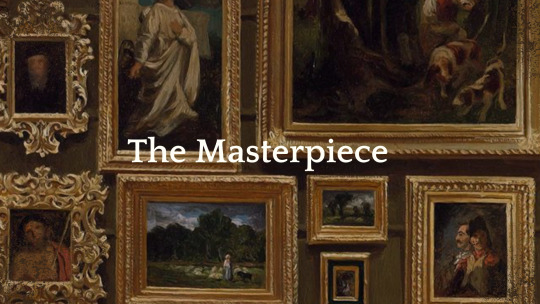
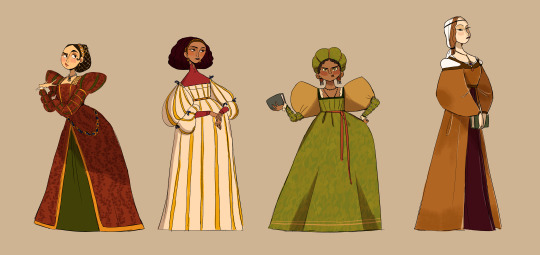
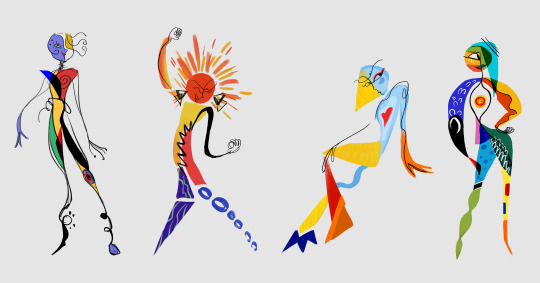
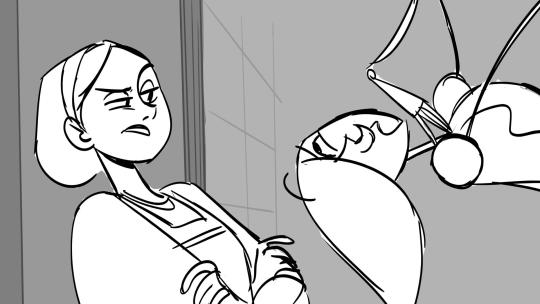
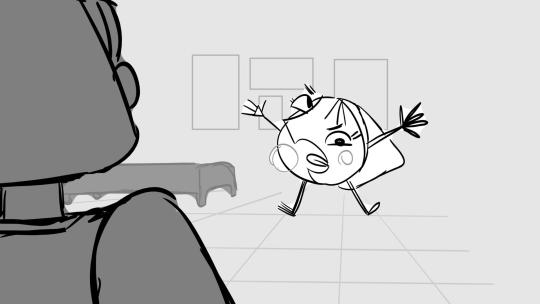
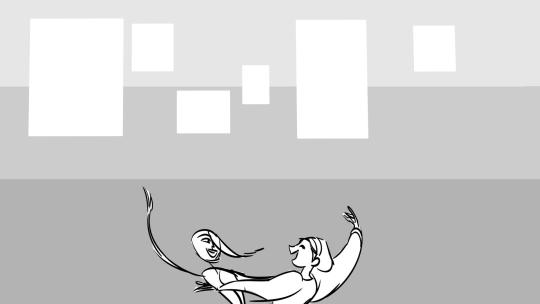
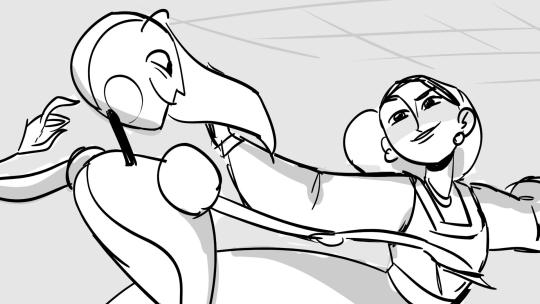
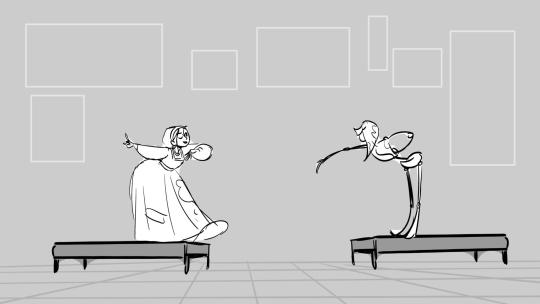
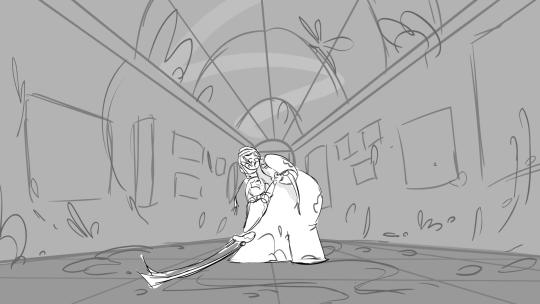
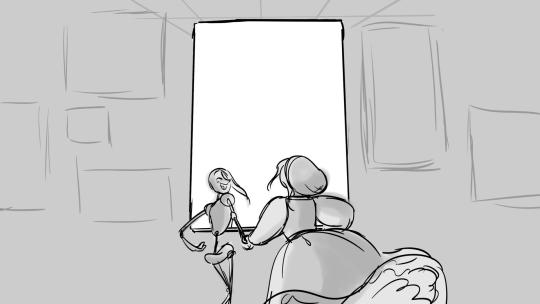
So I got the opportunity last month to make a pitch for a short animated film! So I decided to tell the tale of two paintings in a art museum who get into a fight but ultimately fall in love and decide to hop into a frame together. Unfortunately it wasn't chosen in the end but I am planning to do something with this story in the near future!
#animated short#animation#art#art history#character design#storyboards#painting#sapphic#compeltely normal sapphic behaviour#abstract#renassaince#development
653 notes
·
View notes
Text
ʜᴏᴡ ᴛᴏ ʙᴇ ʟɪᴋᴇ ᴄʟᴇᴏᴘᴀᴛʀᴀ

Becoming like Cleopatra, one of history's most captivating and influential figures, is about channeling her traits rather than mimicking her lifestyle. Cleopatra wasn’t just a queen but a symbol of intelligence, charisma, and power.
1. Cultivate Intelligence
Cleopatra was highly educated and multilingual, fluent in several languages, including Egyptian and Greek.
Dedicate time to learning and expanding your knowledge in areas you’re passionate about. Knowledge is a timeless form of power.
2. Develop Charisma
Cleopatra was known for her charm and ability to influence people. This came from her confidence and emotional intelligence.
Practice active listening, improve your communication skills, and work on your presence to make people feel drawn to you.
3. Embrace Beauty and Self-Care
Cleopatra is often associated with beauty rituals, like bathing in milk and using natural oils.
Create your own self-care routine that makes you feel confident and radiant, whether it’s skincare, fitness, or fashion.
4. Strategize Like a Leader
Cleopatra was a master of diplomacy and strategy. She aligned with powerful allies like Julius Caesar and Mark Antony to protect her reign.
Strengthen your decision-making skills and think ahead about the outcomes of your actions.
5. Be Fearlessly Ambitious
Cleopatra wasn’t afraid to dream big and take risks. She believed in her vision and fought for her kingdom.
Pursue your goals unapologetically, even if they seem out of reach, and don’t be afraid to step into positions of leadership.
6. Own Your Uniqueness
Cleopatra wasn’t afraid to be herself in a male-dominated world. Her individuality made her legendary.
Celebrate what makes you unique and stand out confidently in any situation.
7. Learn the Art of Influence
Cleopatra had a way of making people feel valued and inspired. She understood the power of relationships.
Cultivate meaningful connections, inspire others, and build alliances.

Remember stay hydrated <3


pt. 2?
Like, comments and reblogs are appreciated <3
#clean girl#glow up#pink pilates princess#self development#self improvement#soft life#that girl#becoming that girl#do it for yourself#it girl#how to be like#cleopatra#women in history#history#intelligent#smart#intelligence#talent#knowledge#reality
236 notes
·
View notes
Text
fire and blood was not good enough for people to be riding alyssa targaryen’s dick like this
#‘how could they do this to alyssa!!’ well first of all. they didnt. that was a dream sequence#2nd. alyssa was not well developed enough for yall to fuck w her this hard!#she was a tomboy who dued in childbirth. she gets like 3? 4? paragraphs of a history text#like WHYYYY do u CAAAAREEE#she speaks#hotd
475 notes
·
View notes
Text
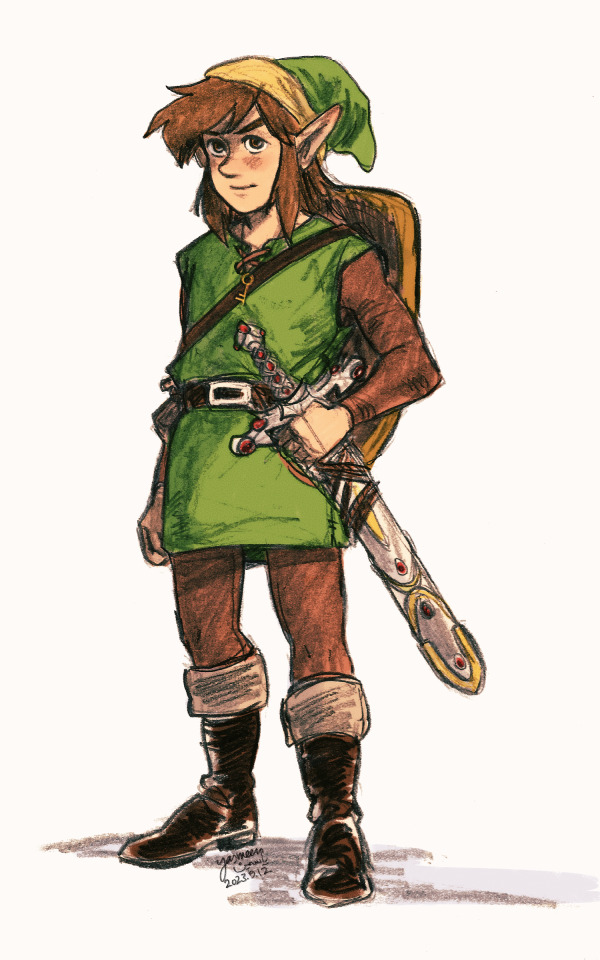
Zelda 2 Link my beloved
#zelda 2#zelda ii#aol#classic link#loz#i love this link a lot#he's COOL!!!!#you just don't know him#The time when I was developing that zelda 2 comic I dove so deep into his character ACK#i was like. looking at all the character dialogues and enemies and reading and rereading the manual#trying to flesh out his character#it's all thanks to dark link honestly#also taking from zelda 1 since it's his character history#also from other links. hero's spirit stuff#that zelda 1 triforce comic was born out of my zelda 2 comic brainstorming
2K notes
·
View notes
Text
I do recommend going to small museums as they always have the coolest and weirdest shit
#example one: RNLI Poole Lifeboat museum has a 1939 lifeboat that helped in the Dunkirk evacuation and has the history from 1882 to 2021#example two: Milton Keynes museum that has rooms that recreate victorian life and has a full museums on development of telephones#I just love museams
2K notes
·
View notes
Text
sure it was a perfect storm of a pressure cooker but i promise destiel was about destiel
#like 2020 was all building towards something. the isolation the pandemic the general uncertainty of day to day life#toss in the heated election and counting process. sure it *couldve* been anything else. but it *wasnt*.#it was destiel. that night there were even other rumours circulating about other shows. another show even had a huge reveal!#but the most widespread and known was destiel because of course it was! because thats what everyone was losing their mind over!#look at the statistics chart of a history of destiel interest over time! i promise the destiel interest is about destiel!#were people all equally invested? no! were some people memeing? yes! but by and large nov 5th became a juggernaut bc of destiel#as someone who literally was refreshing for election news and developed mania from seeing destiel go canon. it was about destiel#sure the intersection of destiel and election results was fun. but i posted way more destiel than election stuff. cause it was about destie#anyway. idk why im on a soapbox#char speaks#destielputinelection#destiel
1K notes
·
View notes
Text
Call me homophobic, but I don't actually think it's great representation to stick a complex, dynamic, newly-realized bisexual character permanently with a flat, boring, underdeveloped love interest just because that was the first guy who showed interest.
#in my hater era#like what you like#but goddamn#the argument that this is somehow outstanding queer representation is baffling#they have had 13 episodes to DO something with this character and they have chosen not to#no development anywhere#even though they literally brought him back so there is built-in background ripe for the picking#and yet#anti bucktommy#anti tommy kinard#the saddest part is#i don't even hate him#he's not important enough to hate#there is just absolutely nothing to him#and that's sad because whether or not he was intended to be long-term or endgame#the writers are better than this and the character SHOULD have SOME development#like why are we all swooning over 911 shoehorning in a returning character to tell a bi buck story#but treating that character like the most expendable love interest in history#i don't like him but actually i think queer characters#and especially ones who are part of such a major later-in-life bisexual realization storyline for a beloved main#deserve a little more respect than what 911 has been giving him#anyway#might delete later i don't know#also i need to stop looking at the 911 subreddit#worst takes i've ever seen that place is a cesspool
275 notes
·
View notes
Text
gus is so cracked. he really came up to mike during breaking bad and was like "it is better to have pinkman on our side. its ur job now to make sure he doesnt kill himself. i know that the last time we tried to do this with nacho he killed himself, so lets try to avoid that. remember that?? how nacho shot himself in the head?? we should not repeat that mistake. make sure jesse does not shoot himself in the head. here is ur paycheck for this quarter. okay, goodbye."
#syd squeaks#season 4 of brba makes me want to yellow wallpaper myself.#i just have to know more. we know that mike started to actually develop legit fondness for jesse but like. what more did he know#what more did he feel. jesse was actually on the ledge for so long. how much did mike know abt that. more than he let on??#what would he have done if it happened again. if this business took another one. if history repeated itself#breaking bad#better call saul#bcs#mike ehrmantraut#gus fring
548 notes
·
View notes
Note
Hi, so i writing a book based in the 1800s like the cowboy eras can you please tell me somethings I should keep in mind about the society and stuff also I need a little motivation I have been loosing it all please and thankyou <<<333
Writing Notes: Cowboys
Cowboy
In the western United States: a horseman skilled at handling cattle, an indispensable laborer in the cattle industry of the trans-Mississippi west, and a romantic figure in American folklore.
Pioneers from the United States encountered Mexican vaqueros (Spanish, literally, “cowboys”; English “buckaroos”) on ranches in Texas about 1820, and soon adopted their masterful skills and equipment—the use of lariat, saddle, spurs, and branding iron.
But cattle were only a small part of the economy of Texas until after the Civil War.
The development of a profitable market for beef in northern cities after 1865 prompted many Texans, including many formerly enslaved African Americans, to go into cattle raising. (Though they have been almost entirely excluded from the mythology of the American cowboy, it is estimated that Black cowboys accounted for nearly a quarter of all cattle workers in the nascent American West during the latter half of the 19th century.)
By the late 1800s, the lucrative cattle industry had spread across the Great Plains from Texas to Canada and westward to the Rocky Mountains.
Vaqueros
In 1519, shortly after the Spanish arrived in the Americas, they began to build ranches to raise cattle and other livestock. Horses were imported from Spain and put to work on the ranches.
Mexico’s native cowboys were called vaqueros, which comes from the Spanish word vaca (cow). Vaqueros were hired by ranchers to tend to the livestock and were known for their superior roping, riding and herding skills.
By the early 1700s, ranching made its way to present-day Texas, New Mexico, Arizona and as far south as Argentina. When the California missions started in 1769, livestock practices were introduced to more areas in the West.
During the early 1800s, many English-speaking settlers migrated to the West and adopted aspects of the vaquero culture, including their clothing style and cattle-driving methods.
Cowboys came from diverse backgrounds and included African-Americans, Native Americans, Mexicans and settlers from the eastern United States and Europe.
Cowboy Life
Cowboys were mostly young men who needed cash. The average cowboy in the West made about $25 to $40 a month.
In addition to herding cattle, they also helped care for horses, repaired fences and buildings, worked cattle drives and in some cases helped establish frontier towns.
Cowboys occasionally developed a bad reputation for being lawless, and some were banned from certain establishments.
They typically wore large hats with wide brims to protect them from the sun, boots to help them ride horses and bandanas to guard them from dust. Some wore chaps on the outsides of their trousers to protect their legs from sharp cactus needles and rocky terrain.
When they lived on a ranch, they shared a bunkhouse with each other. For entertainment, some sang songs, played the guitar or harmonica & wrote poetry.
Cowboys were referred to as cowpokes, buckaroos, cowhands and cowpunchers.
The most experienced cowboy was called the Segundo (Spanish for “second”) and rode squarely with the trail boss.
Everyday work was difficult and laborious for cowboys. Workdays lasted about 15 hours, and much of that time was spent on a horse or doing other physical labor.
Rodeo Cowboys
Some cowboys tested their skills against one another by performing in rodeos—competitions that were based on the daily tasks of a cowboy.
Rodeo activities included bull riding, calf roping, steer wrestling, bareback bronco riding and barrel racing.
The first professional rodeo was held in Prescott, Arizona, in 1888. Since then, rodeos became—and continue to be—popular entertainment events in the United States, Mexico and elsewhere.
Joseph G. McCoy offered the wealthy cattleman's vision of the cowboy. He recorded a reasonably balanced, if slightly condescending, views in his 1874 treatise on the cattle trade.
He lives hard, works hard, has but few comforts and fewer necessities. He has but little, if any, taste for reading. He enjoys a coarse practical joke or a smutty story; loves danger but abhors labor of the common kind; never tires riding, never wants to walk, no matter how short the distance he desires to go. He would rather fight with pistols than pray; loves tobacco, liquor and women better than any other trinity. His life borders nearly upon that of an Indian. If he reads anything, it is in most cases a blood and thunder story of a sensational style. He enjoys his pipe, and relishes a practical joke on his comrades, or a corrupt tale, wherein abounds much vulgarity and animal propensity.
Black Cowboys
African American horsemen who wrangled cattle in the western United States in the late 1800s and beyond.
Though they were almost entirely excluded from the mythology of the American cowboy, it is estimated that Black men accounted for nearly a quarter of all cattle workers in the nascent American West during the latter half of the 19th century.
In the years following the Civil War (1861–65) and emancipation from slavery, a budding ranching industry promised freedom and prosperity unknown to most Black Americans, many of whom were formerly enslaved themselves or were the children of enslaved parents.
Texas became part of the United States in 1845, and, by 1860, enslaved people accounted for 30 percent of the state’s population. Among them were some of the first Black cowboys: skilled laborers with experience in breaking horses and herding stock. Many were given the autonomy to work unsupervised, and some even carried guns.
The cowboy lifestyle came into its own in Texas, which had been cattle country since it was colonized by Spain in the 1500s. But cattle farming did not become the bountiful economic and cultural phenomenon recognized today until the late 1800s, when millions of cattle grazed in Texas.
White Americans seeking cheap land—and sometimes evading debt in the United States—began moving to the Spanish (and, later, Mexican) territory of Texas during the first half of the 19th century.
Though the Mexican government opposed slavery, Americans brought slaves with them as they settled the frontier and established cotton farms and cattle ranches.
By 1825, slaves accounted for nearly 25 percent of the Texas settler population.
By 1860, fifteen years after it became part of the Union, that number had risen to over 30 percent—that year’s census reported 182,566 slaves living in Texas.
As an increasingly significant new slave state, Texas joined the Confederacy in 1861. Though the Civil War hardly reached Texas soil, many white Texans took up arms to fight alongside their brethren in the East.
While Texas ranchers fought in the war, they depended on their slaves to maintain their land and cattle herds.
In doing so, the slaves developed the skills of cattle tending (breaking horses, pulling calves out of mud and releasing longhorns caught in the brush, to name a few) that would render them invaluable to the Texas cattle industry in the post-war era. But with a combination of a lack of effective containment— barbed wire was not yet invented—and too few cowhands, the cattle population ran wild.
Ranchers returning from the war discovered that their herds were lost or out of control. They tried to round up the cattle and rebuild their herds with slave labor, but eventually the Emancipation Proclamation left them without the free workers on which they were so dependent.
Desperate for help rounding up maverick cattle, ranchers were compelled to hire now-free, skilled African-Americans as paid cowhands.
Freed blacks skilled in herding cattle found themselves in even greater demand when ranchers began selling their livestock in northern states, where beef was nearly ten times more valuable than it was in cattle-inundated Texas.
The lack of significant railroads in the state meant that enormous herds of cattle needed to be physically moved to shipping points in Kansas, Colorado and Missouri. Rounding up herds on horseback, cowboys traversed unforgiving trails fraught with harsh environmental conditions and attacks from Native Americans defending their lands.
African-American cowboys faced discrimination in the towns they passed through—they were barred from eating at certain restaurants or staying in certain hotels, for example—but within their crews, they found respect and a level of equality unknown to other African-Americans of the era.
Sources: 1 2 3 4 5 ⚜ More: Notes & References ⚜ Writing Resources PDFs
Writing occasionally makes me feel like I'm losing it too! I find that taking a step back can be good. That time away from being a writer can be used to being the reader again, and to research your topic. And when your head's clear enough, you can go back & see if the story flows more freely, armed with information you collected to incorporate in your writing. Hope this helps <3
#cowboy#character development#writeblr#spilled ink#dark academia#writing tips#writing advice#history#character building#fiction#writing inspiration#writing ideas#light academia#literature#writers on tumblr#poets on tumblr#writing prompt#writing reference#creative writing#writing resources
155 notes
·
View notes